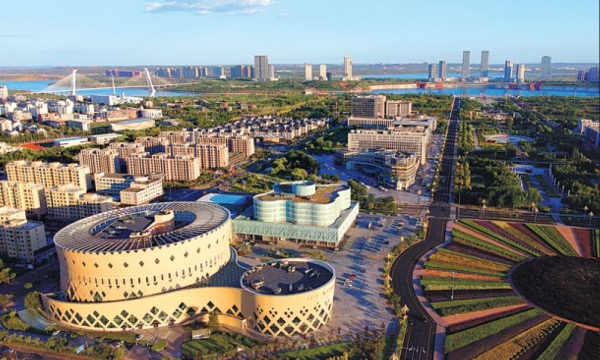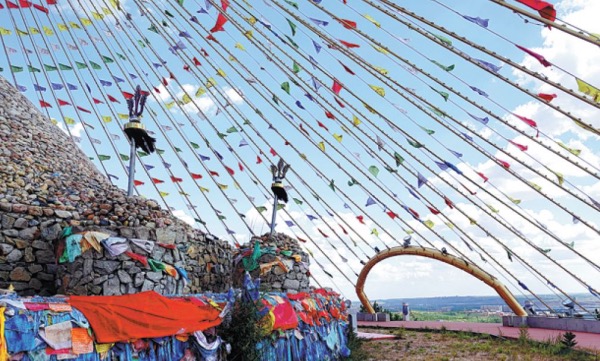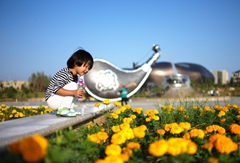Growth of district in Inner Mongolia's Ordos turning heads
Updated: 2021-07-27 (Xinhua and chinadaily.com.cn)  Print
Print 




An aerial photo of Kangbashi district in Ordos, the Inner Mongolia autonomous region. YAN ZHIHONG/FOR CHINA DAILY
After living in Kangbashi for two years, Jon Steenbeke now regards this emerging district of Ordos, a city in the Inner Mongolia autonomous region, as his second hometown.
Steenbeke, a 35-year-old United States citizen, works as an English teacher in Kangbashi, where he has settled with his family. His second child was born there.
"There is no way I can connect this beautiful district with the term 'ghost town'," said Steenbeke, referring to a term used by some foreign media a decade ago. "The first time I came to Kangbashi, I fell in love with it."
In the early days of its construction, public facilities such as schools, hospitals and shopping malls were not yet complete. Scenes of vacant buildings and empty streets were not uncommon.
But now, Kangbashi has developed into a livable modern community that attracts locals as well as foreigners.
Bai Yulong, an official from the local bureau of culture and tourism, said the whole area was like a sheet of blank paper waiting to be drawn on.
Over a period of more than 10 years, Kangbashi has improved its supporting facilities to attract more settlers, leading the way in Ordos as it reduces its reliance on heavy industry and resources such as coal.

An aobao, a cone-shaped mound where Mongolian herders traditionally offer livestock and libations to pray for peace and a good harvest, stands near Kangbashi. YAN ZHIHONG/FOR CHINA DAILY
New industries, such as cultural tourism, have become pillars of the district's thriving economy, and Kangbashi has become a popular tourist destination.
Last year, the district received over 3.26 million visitors, bringing in tourist revenue of about 1.1 billion yuan ($169 million).
Cultural and sports events are held regularly. At the Ordos International Circuit, race cars speed around the track, their engines roaring. "Kangbashi is an adventurous and passionate place, attracting many race car drivers from home and abroad every year," racer Wang Gang said.
Meanwhile, the development of education, culture, entertainment, medical care and other public services has improved people's quality of life.
In recent years, more than 30 schools have been built in Kangbashi, ranging from preschool education to higher education.
About 30 medical institutions have made services accessible to residents. Kangbashi is also the first district in China to provide girls ages 13 to 18 with vaccines against cervical cancer free of charge.
The relocation of the Ordos city government to Kangbashi has encouraged many enterprises to follow suit and set up their regional headquarters within the district, including Shenhua Group, Yankuang Group and China National Petroleum Corp.
"Kangbashi is a microcosm of the transformation and upgrading of resource-abundant cities," said Yu Guangjun, director of the Institute of Economics at the Inner Mongolia Academy of Social Sciences.
"The district is also an epitome of the high-quality development of China's economy."





 Ordos Impression
Ordos Impression Ordos WeChat
Ordos WeChat Ordos Reported
Ordos Reported


